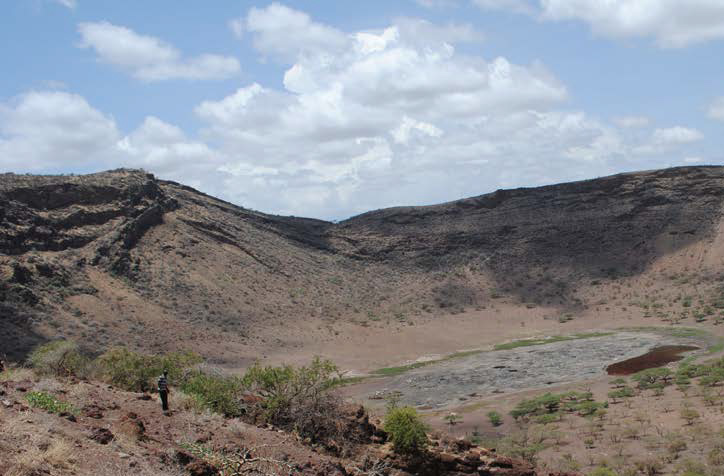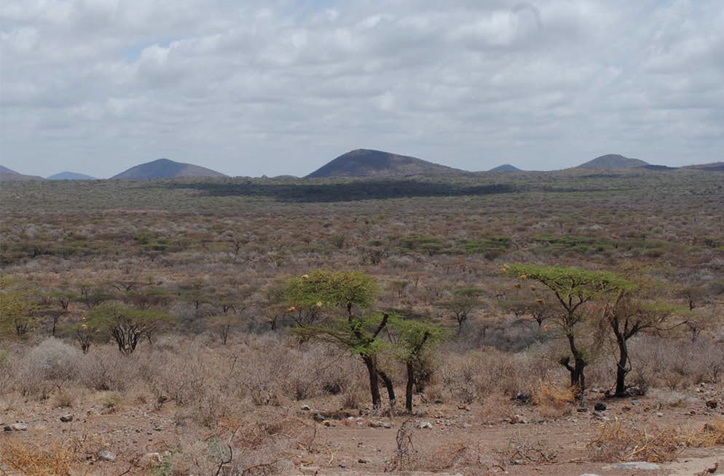
Igombe Crater as seen from the top
Nyambene National Reserve is a 265 Km2 conservancy named after the famous Nyambene Hills. The reserve was originally gazetted as a 640 Km2 conservation area under a Kenya legal notice 86. The conservancy is named after the Nyambene Hills, which form its eastern boundary, and is home to the Ameeru.
Nyambene National Reserve has one of the most breathtaking craters in the world – Igombe. The Crater is located at the northeast tip of the Nyambene range. The crater was showcased in 2012 in a photo gallery by Martin Harvey titled ‘Africa from the Air’ that featured on the travel magazine of The Telegraph.

The circular crater rises 73 M (250 ft.) above the surrounding area. It has an average diameter of 800 M and an average crater depth below the rim of 140 M. The rim itself is between 80M to 100M thick. A small lake on the floor of Igombe crater evaporates to form
a soda salt crust where the Meru people have been collecting salt for centuries.Local folklore tells of a story of how the crater was used as a test for the young Meru men to prove they were ready to start their homes. If a young man could push a donkey loaded with soda packs from the lake to a special band of dark rock, about 100 M from the crater floor on the eastern rim, he could choose any girl in the tribe as his wife. The only condition was that he had to use his chest to drive the animal to that point.
Other attractions at the reserve include the Gerenuk antelope, the reticulated giraffe and Grevy’s zebra. Nyambene National Reserve has a healthy population of leopards, cheetahs and lions. The conservancy is also a bird watcher’s paradise hosting hundreds of species of birds. A 10 to 15 feet gulley which has formed provides the only entrance to the crater.

GACHIURU
The birds nesting place or Gachiuru as its locally called, is a bird watchers paradise in nyambene conservancy. Populated with over 10,000 nests artistically hanging in acacia trees the birds are active during the morning hours and in the evenings. Birds to be found here include the great horned owl, doves, and the greater sage grouse amongst many others. This area is largely unmapped and can be an ornithologist paradise.

